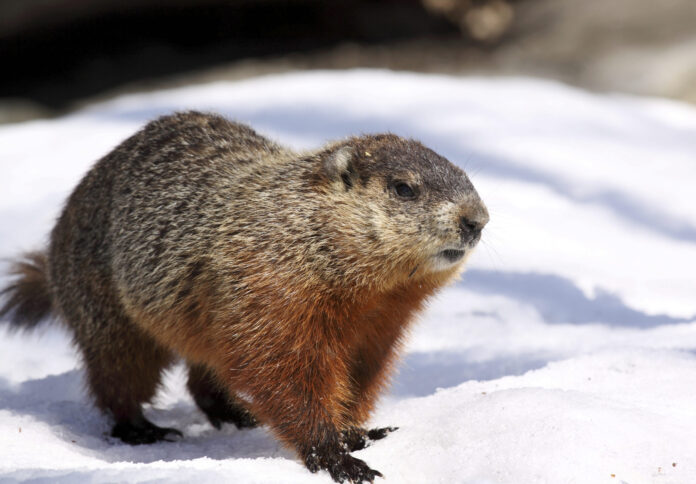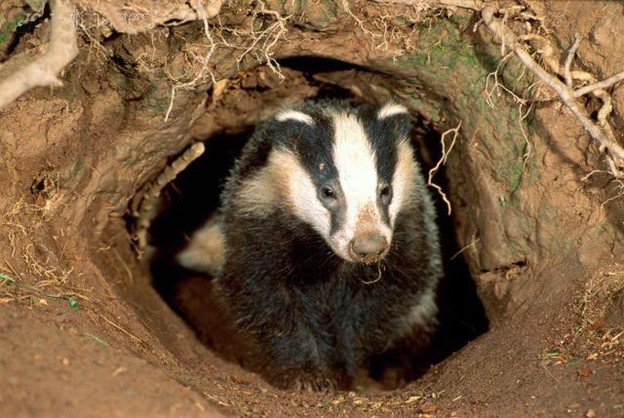
Waiting for spring…
In Lithuania, January 25 marks midwinter. It is said that on that day badgers in hibernation awaken, peek out of their burrows and turn on their other sides to continue sleeping. It was said that snakes and worms wake up and begin to forage for food, so the day was also called Worm Day.
Just as groundhogs (woodchucks) do in North America on February 2, if the sun is shining, the badger is startled by his shadow, and goes back to sleep. This means that spring will be arriving late.

On a cloudy day, the badger will stroll around the woods, leaving many pawprints. That is taken to mean that the rest of the winter will be warmer, and spring will come early.
In Ontario, there is one groundhog most famous for his predictions. He is Wiarton Willie, and a statue in his honour stands near the shore of Georgian Bay, in the town of Wiarton.
Groundhog Day (from Pennsylvania German (Grund’sau dåk, Grundsaudaag, Grundsow Dawg, Murmeltiertag) or Daks Day in Nova Scotia is a popular North American tradition derived from the Pennsylvania Dutch superstition about the groundhog seeing its shadow. Wikipedia hastens to confirm that while the tradition remains popular in the 21st century, studies have found no consistent association between a groundhog seeing its shadow and the subsequent arrival time of spring-like weather.
The weather lore was brought from German-speaking areas where the badger (German: Dachs) is the forecasting animal. This appears to be an enhanced version of the lore that clear weather on the Christian festival of Candlemas forebodes a prolonged winter. Candlemas is a church festival, February 2, in honor of the presentation of the infant Jesus in the Temple and the purification of the Virgin Mary: candles are blessed on this day.




























